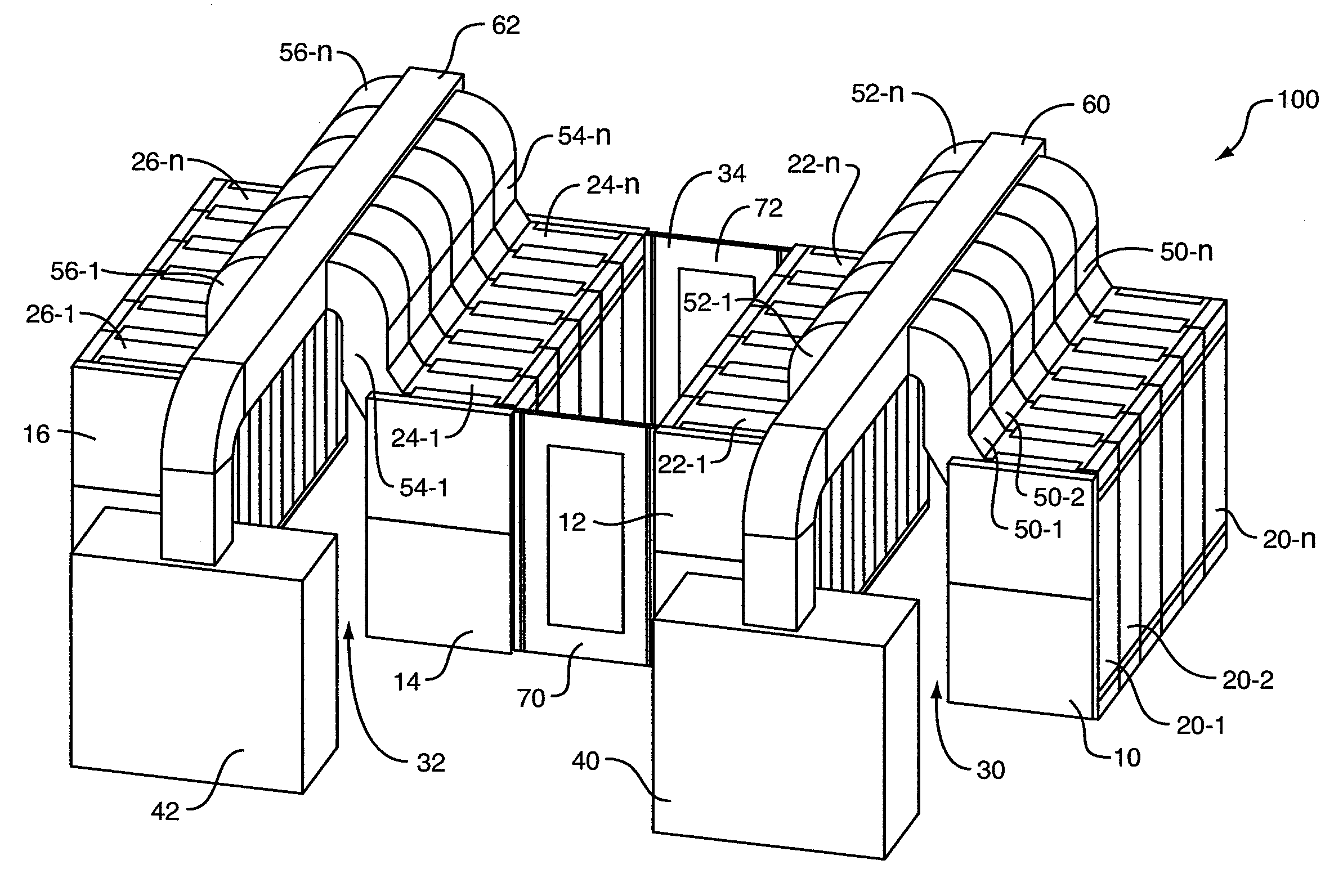Systems and Methods for Closed Loop Heat Containment with Cold Aisle Isolation for Data Center Cooling
a data center and closed loop technology, applied in the field of data center airflow and temperature management, can solve the problems of limiting the number of racks that can be fit into a data center, the depth of the rack, and the amount of heat generated by electronic equipment that must be dissipated, so as to maximize the capacity of the data center rack
- Summary
- Abstract
- Description
- Claims
- Application Information
AI Technical Summary
Benefits of technology
Problems solved by technology
Method used
Image
Examples
Embodiment Construction
[0083]This invention may be accomplished in an assembly for extracting heat from a housing for electronic equipment, the housing having a front, a back, two sides and a top, the assembly comprising a back for the housing that defines an open area proximate the top, and an air passageway in fluid communication with the open area in the back, to conduct heated air exiting the housing through the open area away from the housing. Typically, the front is perforated and the sides are solid, so that air flows into the housing through the front, through the electronic equipment located in the housing, and out of the housing through the open area, into the passageway.
[0084]FIGS. 1A-1C schematically depict three concepts for accomplishing the invention, which is an assembly for extracting heat from a housing for electronic equipment. In this case, housing 910 may be a computer server rack such as a “Paramount” enclosure offered by Wright Line LLC of Worcester, Mass. Computer equipment rack 91...
PUM
 Login to View More
Login to View More Abstract
Description
Claims
Application Information
 Login to View More
Login to View More - R&D
- Intellectual Property
- Life Sciences
- Materials
- Tech Scout
- Unparalleled Data Quality
- Higher Quality Content
- 60% Fewer Hallucinations
Browse by: Latest US Patents, China's latest patents, Technical Efficacy Thesaurus, Application Domain, Technology Topic, Popular Technical Reports.
© 2025 PatSnap. All rights reserved.Legal|Privacy policy|Modern Slavery Act Transparency Statement|Sitemap|About US| Contact US: help@patsnap.com



